 W
WAn X-ray telescope (XRT) is a telescope that is designed to observe remote objects in the X-ray spectrum. In order to get above the Earth's atmosphere, which is opaque to X-rays, X-ray telescopes must be mounted on high altitude rockets, balloons or artificial satellites.
 W
WThis list of space telescopes is grouped by major frequency ranges: gamma ray, x-ray, ultraviolet, visible, infrared, microwave and radio. Telescopes that work in multiple frequency bands are included in all of the appropriate sections. Space telescopes that collect particles, such as cosmic ray nuclei and/or electrons, as well as instruments that aim to detect gravitational waves, are also listed. Missions with specific targets within the Solar System, are excluded; see List of Solar System probes for these, and List of Earth observation satellites for missions targeting our planet.
 W
WX-ray astronomy detectors are instruments that detect X-rays for use in the study of X-ray astronomy.
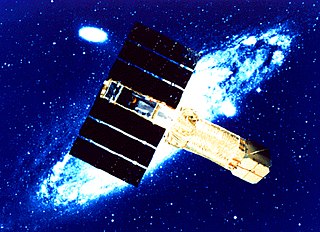 W
WThe Advanced Satellite for Cosmology and Astrophysics was the fourth cosmic X-ray astronomy mission by JAXA, and the second for which the United States provided part of the scientific payload. The satellite was successfully launched on 20 February 1993. The first eight months of the ASCA mission were devoted to performance verification. Having established the quality of performance of all ASCA's instruments, the spacecraft provided science observations for the remainder of the mission. In this phase the observing program was open to astronomers based at Japanese and U.S. institutions, as well as those located in member states of the European Space Agency.
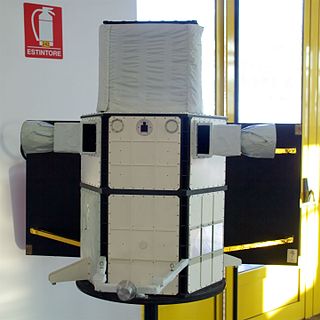 W
WAGILE is an X-ray and Gamma ray astronomical satellite of the Italian Space Agency (ASI).
 W
WThe Apollo Telescope Mount, or ATM, was a manned solar observatory that was a part of Skylab, the first American space station. It could observe the Sun in wavelengths ranging from soft X-rays, ultra-violet, and visible light.
 W
WArcus is a proposed X-ray space observatory proposed to NASA's Explorer program, Medium Explorer (MIDEX) class.
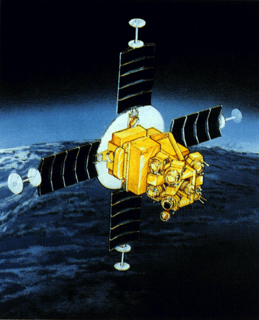 W
WThe Array of Low Energy X-ray Imaging Sensors X-ray telescope featured curved mirrors whose multilayer coatings reflected and focused low-energy X-rays or extreme ultraviolet light the way optical telescopes focus visible light. The satellite and payloads were funded by the United States Department of Energy and built by Los Alamos National Laboratory in collaboration with Sandia National Laboratories and the University of California-Space Sciences Lab. The satellite bus was built by AeroAstro, Inc. of Herndon, VA. The Launch was provided by the United States Air Force Space Test Program on a Pegasus Booster on April 25, 1993. The mission was entirely controlled from a small groundstation at LANL.
 W
WThe Astronomical Netherlands Satellite was a space-based X-ray and ultraviolet telescope. It was launched into Earth orbit on 30 August 1974 at 14:07:39 UTC in a Scout rocket from Vandenberg Air Force Base, United States. The mission ran for 20 months until June 1976, and was jointly funded by the Netherlands Institute for Space Research (NIVR) and NASA. ANS was the first Dutch satellite, and the Main Belt asteroid 9996 ANS was named after it. ANS reentered Earth's atmosphere on June 14, 1977.
 W
WAstrosat is India's first dedicated multi-wavelength space telescope. It was launched on a PSLV-XL on 28 September 2015. With the success of this satellite, ISRO has proposed launching AstroSat-2 as a successor for Astrosat.
 W
WBeppoSAX was an Italian–Dutch satellite for X-ray astronomy which played a crucial role in resolving the origin of gamma-ray bursts (GRBs), the most energetic events known in the universe. It was the first X-ray mission capable of simultaneously observing targets over more than 3 decades of energy, from 0.1 to 300 kiloelectronvolts (keV) with relatively large area, good energy resolution and imaging capabilities. BeppoSAX was a major programme of the Italian Space Agency (ASI) with the participation of the Netherlands Agency for Aerospace Programmes (NIVR). The prime contractor for the space segment was Alenia while Nuova Telespazio led the development of the ground segment. Most of the scientific instruments were developed by the Italian National Research Council (CNR) while the Wide Field Cameras were developed by the Netherlands Institute for Space Research (SRON) and the LECS was developed by the astrophysics division of the European Space Agency's ESTEC facility.
 W
WThe Broad Band X-ray Telescope (BBXRT) was flown on the Space Shuttle Columbia (STS-35) on 1990 December 2-December 11, as part of the ASTRO-1 payload. The flight of BBXRT marked the first opportunity for performing X-ray observations over a broad energy range with a moderate energy resolution.
 W
WThe Chandra X-ray Observatory (CXO), previously known as the Advanced X-ray Astrophysics Facility (AXAF), is a Flagship-class space telescope launched aboard the Space Shuttle Columbia during STS-93 by NASA on July 23, 1999. Chandra is sensitive to X-ray sources 100 times fainter than any previous X-ray telescope, enabled by the high angular resolution of its mirrors. Since the Earth's atmosphere absorbs the vast majority of X-rays, they are not detectable from Earth-based telescopes; therefore space-based telescopes are required to make these observations. Chandra is an Earth satellite in a 64-hour orbit, and its mission is ongoing as of 2020.
 W
WEinstein Observatory (HEAO-2) was the first fully imaging X-ray telescope put into space and the second of NASA's three High Energy Astrophysical Observatories. Named HEAO B before launch, the observatory's name was changed to honor Albert Einstein upon its successfully attaining orbit.
 W
WeROSITA is an X-ray instrument built by the Max Planck Institute for Extraterrestrial Physics (MPE) in Germany. It is part of the Russian-German Spektr-RG space observatory, which also carries the Russian telescope ART-XC. It was launched by Roscosmos on 13 July 2019 from Baikonur, and deployed in a 6-month halo orbit around the second Lagrange point (L2).
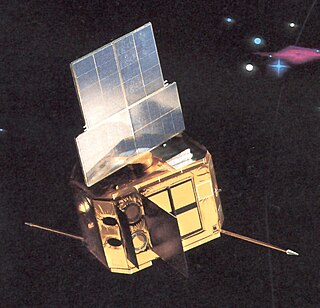 W
WThe European X-ray Observatory Satellite (EXOSAT), originally named HELOS, was an X-ray telescope operational from May 1983 until April 1986 and in that time made 1780 observations in the X-ray band of most classes of astronomical object including active galactic nuclei, stellar coronae, cataclysmic variables, white dwarfs, X-ray binaries, clusters of galaxies, and supernova remnants.
 W
WThe International Astrophysical Observatory "GRANAT", was a Soviet space observatory developed in collaboration with France, Denmark and Bulgaria. It was launched on 1 December 1989 aboard a Proton rocket and placed in a highly eccentric four-day orbit, of which three were devoted to observations. It operated for almost nine years.
 W
WThe Gravity and Extreme Magnetism SMEX (GEMS) mission was a cancelled space observatory mission. The main scientific goal of GEMS was to be the first mission to systematically measure the polarization of cosmic X-Ray sources. GEMS would have provided data to help scientists study the shape of spacetime that has been distorted by a spinning black hole's gravity and the structure and effects of the magnetic fields around neutron stars. It was cancelled by NASA in June 2012 for potential cost overruns due to delays in developing the technology.
 W
WHakucho was Japan's first X-ray astronomy satellite, developed by the Institute of Space and Aeronautical Science. It was launched by the ISAS M-3C rocket on the M-3C-4 mission on February 21, 1979 and reentered the atmosphere on April 15, 1985.
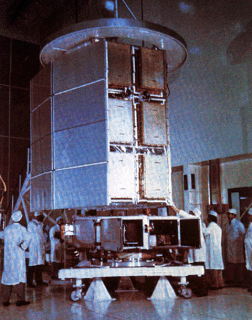 W
WHEAO-1 was an X-ray telescope launched in 1977. HEAO-1 surveyed the sky in the X-ray portion of the electromagnetic spectrum, providing nearly constant monitoring of X-ray sources near the ecliptic poles and more detailed studies of a number of objects by observations lasting 3–6 hours. It was the first of NASA's three High Energy Astronomy Observatories, HEAO 1, launched August 12, 1977 aboard an Atlas rocket with a Centaur upper stage, operated until 9 January 1979. During that time, it scanned the X-ray sky almost three times
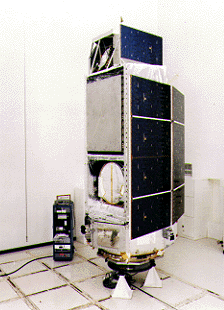 W
WThe last of NASA's three High Energy Astronomy Observatories, HEAO 3 was launched 20 September 1979 on an Atlas-Centaur launch vehicle, into a nearly circular, 43.6 degree inclination low-Earth orbit with an initial perigeum of 486.4 km. The normal operating mode was a continuous celestial scan, spinning approximately once every 20 min about the spacecraft z-axis, which was nominally pointed at the Sun. Total mass of the observatory at launch was 2,660.0 kilograms (5,864.3 lb).
 W
WThe High Energy Transient Explorer was an American astronomical satellite with international participation. The prime objective of HETE was to carry out the first multiwavelength study of gamma-ray bursts with UV, X-ray, and gamma-ray instruments mounted on a single, compact spacecraft. A unique feature of the HETE mission was its capability to localize GRBs with ~10 arc second accuracy in near real time aboard the spacecraft, and to transmit these positions directly to a network of receivers at existing ground-based observatories enabling rapid, sensitive follow-up studies in the radio, IR, and optical bands. The satellite bus for the first HETE-1 was designed and built by AeroAstro, Inc. of Herndon, VA; the replacement satellite, HETE-2, was built by MIT based on the original HETE design.
 W
WHigh-Energy Replicated Optics (HERO) is a high-altitude balloon-borne x-ray telescope based at the Marshall Space Flight Center. Its mirrors are conical approximations to Wolter type 1 geometry. The proving flight, at least, used a high-pressure gas scintillation proportional counter with relatively low spatial resolution.
 W
WHinode, formerly Solar-B, is a Japan Aerospace Exploration Agency Solar mission with United States and United Kingdom collaboration. It is the follow-up to the Yohkoh (Solar-A) mission and it was launched on the final flight of the M-V rocket from Uchinoura Space Center, Japan on 22 September 2006 at 21:36 UTC. Initial orbit was perigee height 280 km, apogee height 686 km, inclination 98.3 degrees. Then the satellite maneuvered to the quasi-circular sun-synchronous orbit over the day/night terminator, which allows near-continuous observation of the Sun. On 28 October 2006, the probe's instruments captured their first images.
 W
WHitomi , also known as ASTRO-H and New X-ray Telescope (NeXT), was an X-ray astronomy satellite commissioned by the Japan Aerospace Exploration Agency (JAXA) for studying extremely energetic processes in the Universe. The space observatory was designed to extend the research conducted by the Advanced Satellite for Cosmology and Astrophysics (ASCA) by investigating the hard X-ray band above 10 keV. The satellite was originally called New X-ray Telescope; at the time of launch it was called ASTRO-H. After it was placed in orbit and its solar panels deployed, it was renamed Hitomi. The new name refers to the pupil of an eye, and to a legend of a painting of four dragons, two of which were given eyes and flew into the sky, and two that were left eyeless and stayed as motionless art. The spacecraft was launched on 17 February 2016 and contact was lost on 26 March 2016, due to multiple incidents with the attitude control system leading to an uncontrolled spin rate and breakup of structurally weak elements.
 W
WThe INTErnational Gamma-Ray Astrophysics Laboratory (INTEGRAL) is a space telescope for observing gamma rays of energies up to 8 MeV. It was launched by the European Space Agency (ESA) into Earth orbit in 2002, and is designed to provide imaging and spectroscopy of cosmic sources. In the MeV energy range, it is the most sensitive gamma ray observatory in space. It is sensitive to higher energy photons than X-ray instruments such as NuSTAR, the Neil Gehrels SWIFT Observatory, XMM-Newton, and lower than other gamma-ray instruments such Fermi and HESS.
 W
WThe International X-ray Observatory (IXO) is a cancelled X-ray telescope that was to be launched in 2021 as a joint effort by NASA, the European Space Agency (ESA), and the Japan Aerospace Exploration Agency (JAXA). In May 2008, ESA and NASA established a coordination group involving all three agencies, with the intent of exploring a joint mission merging the ongoing XEUS and Constellation-X projects. This proposed the start of a joint study for IXO. NASA was forced to cancel the observatory due to budget constrains in fiscal year 2012. ESA however decided to reboot the mission on its own developing Advanced Telescope for High Energy Astrophysics as a part of Cosmic Vision program.
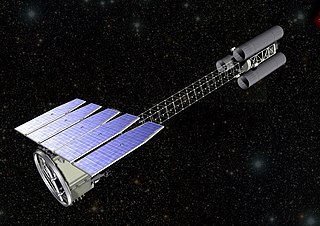 W
WThe Imaging X-ray Polarimetry Explorer, commonly known as IXPE, is a space observatory with three identical telescopes designed to measure the polarization of cosmic X-rays. The mission will study exotic astronomical objects and permit mapping the magnetic fields of black holes, neutron stars, pulsars, supernova remnants, magnetars, quasars, and active galactic nuclei. The high-energy X-ray radiation from these objects' surrounding environment can be polarized – vibrating in a particular direction. Studying the polarization of X-rays reveals the physics of these objects and can provide insights into the high-temperature environments where they are created.
 W
WThe Joint European Telescope for X-ray astronomy (JET-X) was a space telescope which was constructed as part of the Spectrum-X-Gamma project and completed in 1994 but never actually launched. It is now on display in the Science Museum, London.
 W
WThe Lynx X-ray Observatory (Lynx) is a NASA-funded Large Mission Concept Study commissioned as part of the National Academy of Sciences 2020 Astronomy and Astrophysics Decadal Survey. The concept study phase is complete as of August 2019, and the Lynx final report has been submitted to the Decadal Survey for prioritization. If launched, Lynx would be the most powerful X-ray astronomy observatory constructed to date, enabling order-of-magnitude advances in capability over the current Chandra X-ray Observatory and XMM-Newton space telescopes.
 W
WThe Neil Gehrels Swift Observatory, previously called the Swift Gamma-Ray Burst Mission, is a NASA space observatory designed to detect gamma-ray bursts (GRBs). It was launched on November 20, 2004, aboard a Delta II rocket. Headed by Principal Investigator Neil Gehrels, NASA Goddard Space Flight Center, the mission was developed in a joint partnership between Goddard and an international consortium from the United States, United Kingdom, and Italy. The mission is operated by Pennsylvania State University as part of NASA's Medium Explorers program (MIDEX).
 W
WThe Neutron star Interior Composition Explorer (NICER) is a NASA telescope on the International Space Station, designed and dedicated to the study of the extraordinary gravitational, electromagnetic, and nuclear physics environments embodied by neutron stars, exploring the exotic states of matter where density and pressure are higher than in atomic nuclei. As part of NASA's Explorers program, NICER enabled rotation-resolved spectroscopy of the thermal and non-thermal emissions of neutron stars in the soft X-ray band with unprecedented sensitivity, probing interior structure, the origins of dynamic phenomena, and the mechanisms that underlie the most powerful cosmic particle accelerators known. NICER achieved these goals by deploying, following the launch, and activation of X-ray timing and spectroscopy instruments. NICER was selected by NASA to proceed to formulation phase in April 2013.
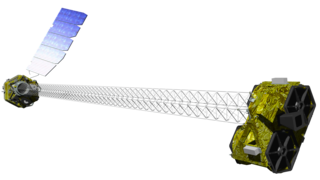 W
WNuSTAR is a space-based X-ray telescope that uses a conical approximation to a Wolter telescope to focus high energy X-rays from astrophysical sources, especially for nuclear spectroscopy, and operates in the range of 3 to 79 keV.
 W
WReuven Ramaty High Energy Solar Spectroscopic Imager was a NASA solar flare observatory. It was the sixth mission in the Small Explorer program, selected in October 1997 and launched on 5 February 2002. Its primary mission was to explore the physics of particle acceleration and energy release in solar flares.
 W
WROSAT was a German Aerospace Center-led satellite X-ray telescope, with instruments built by West Germany, the United Kingdom and the United States. It was launched on 1 June 1990, on a Delta II rocket from Cape Canaveral, on what was initially designed as an 18-month mission, with provision for up to five years of operation. ROSAT actually operated for over eight years, finally shutting down on 12 February 1999.
 W
WThe Rossi X-ray Timing Explorer (RXTE) was a satellite that observed the time variation of astronomical X-ray sources, named after physicist Bruno Rossi. The RXTE had three instruments—an All Sky Monitor, the Proportional Counter Array, and the High-Energy X-ray Timing Experiment (HEXTE). The RXTE observed X-rays from black holes, neutron stars, X-ray pulsars and X-ray bursts. It was funded as part of the Explorer program, and is sometimes also called Explorer 69.
 W
WSpektr-RG is a Russian–German high-energy astrophysics space observatory which was launched on 13 July 2019. It follows on from the Spektr-R satellite telescope launched in 2011.
 W
WSuzaku was an X-ray astronomy satellite developed jointly by the Institute of Space and Aeronautical Science at JAXA and NASA's Goddard Space Flight Center to probe high energy X-ray sources, such as supernova explosions, black holes and galactic clusters. It was launched on 10 July 2005 aboard the M-V rocket on the M-V-6 mission. After its successful launch, the satellite was renamed Suzaku after the mythical Vermilion bird of the South.
 W
WTenma, known as ASTRO-B before launch, was a Japanese X-ray astronomy satellite, developed by the Institute of Space and Astronautical Science. It was launched on February 20, 1983 using a M-3S rocket on the M-3S-3 mission.
 W
WUhuru was the first satellite launched specifically for the purpose of X-ray astronomy. It was also known as the X-ray Explorer Satellite, SAS-A, SAS 1, or Explorer 42. The observatory was launched on December 12, 1970 into an initial orbit of about 560 km apogee, 520 km perigee, 3 degrees inclination, with a period of 96 minutes. The mission ended in March 1973. Uhuru was a scanning mission, with a spin period of ~12 minutes. It performed the first comprehensive survey of the entire sky for X-ray sources, with a sensitivity of about 0.001 times the intensity of the Crab nebula.
 W
WA Wolter telescope is a telescope for X-rays that only uses grazing incidence optics – mirrors that reflect X-rays at very shallow angles.
 W
WAn X-ray astronomy satellite studies X-ray emissions from celestial objects, as part of a branch of space science known as X-ray astronomy. Satellites are needed because X-radiation is absorbed by the Earth's atmosphere, so instruments to detect X-rays must be taken to high altitude by balloons, sounding rockets, and satellites.
 W
WXMM-Newton, also known as the High Throughput X-ray Spectroscopy Mission and the X-ray Multi-Mirror Mission, is an X-ray space observatory launched by the European Space Agency in December 1999 on an Ariane 5 rocket. It is the second cornerstone mission of ESA's Horizon 2000 programme. Named after physicist and astronomer Sir Isaac Newton, the spacecraft is tasked with investigating interstellar X-ray sources, performing narrow- and broad-range spectroscopy, and performing the first simultaneous imaging of objects in both X-ray and optical wavelengths.
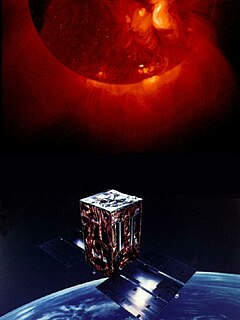 W
WYohkoh, known before launch as Solar-A, was a Solar observatory spacecraft of the Institute of Space and Astronautical Science (Japan), in collaboration with space agencies in the United States and the United Kingdom. It was launched into Earth orbit on August 30, 1991 by the M-3SII rocket from Kagoshima Space Center. It took its first soft X-ray image on September 13, 1991 21:53:40, and movie representations of the X-ray corona over 1991-2001 are available at the Yohkoh Legacy site.